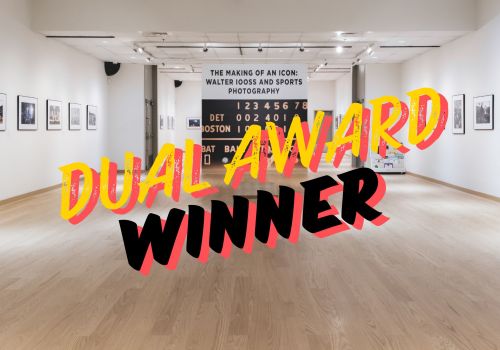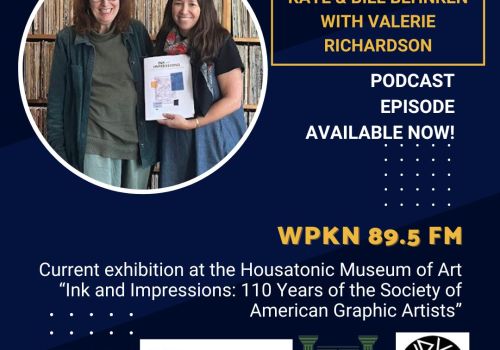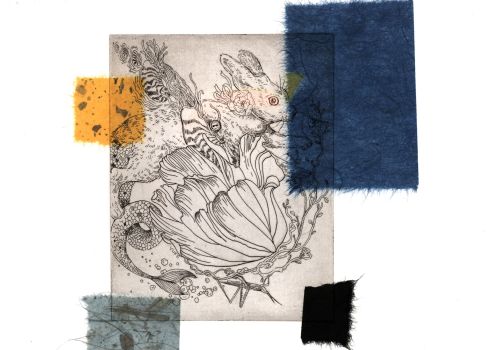
Illustrating Connecticut Intro
ILLUSTRATING CONNECTICUT • PEOPLE, PLACES AND THINGS
Robbin Zella
Illustrating Connecticut: People, Places, and Things explores the history and culture of Connecticut, highlighting the art of illustrators, many of whom presently live and work in the state.
Connecticut has long been called "home" by artists drawn to its proximity to New York City. A strong contingent in Westport and Weston has allowed for the development of such collections as the Sanford B. D. Low Illustration Collection at the New Britain Museum of American Art, the Westport Historical Society, and the Westport Library, the latter two with illustration collections on continuous view.
Illustrating Connecticut: People, Places, and Things features works by Randall Enos, Murray Tinkelman, Kathy Jakobsen, Guy Billout, Nancy White Cassidy, Merle Nacht, Mark Hess, Wendell Minor, Bob Kessel, Blaine Kruger, Miggs Burroughs, Bernie Fuchs, Lonni Sue Johnson, Leslie Cober-Gentry, Hal Mayforth, Kinuko Craft, Robert Crawford, Brian Cronin, Thomas G. Fowler, Ross MacDonald, Walter O.R. Korder, Garrett Price, Etienne Delessert, Christopher Passehl, Jeff Seaver, Bill Thomson, John Dykes, and Barry Moser. These artists capture the many facets of Connecticut, spotlighting the history of its agricultural origins, the role that its inventions played in the Civil War and the winning of the American West, the significance of its military contributions in developing helicopters and submarines, and its leadership in forming a national identity through a shared language. The quintessential New England town green serves as an icon of civic pride while the First Constitution (Fundamental Orders) hidden in the Charter Oak stands as a symbol of the independence and resolve of its people. Also enduring is the image of the Yankee Peddler selling products produced here: buttons, pins, needles, clocks, and nutmeg.
These works are powerful narratives that offer an accounting of extraordinary sacrifice and outrageous fortune, of conspirators and heroes, and of objects brilliantly conceived and borne through perseverance and sheer determination. On the following pages you will be (re)acquainted with Native American Samson Occom, a founder of Dartmouth College, the infamous defector and spy Benedict Arnold who led the British attack on New London, and humorist Mark Twain and his gifts to the literary arts. Connecticut boasts many "firsts:" Jupiter Hammond who in 1760 was the first African-American writer to be published, the Old State House, Hartford, which was the first state house in America, and the first American cookbook that was published in Hartford in 1796. I hope that you will enjoy these beautiful, delightful, and more often than not, witty illustrations that make (re)learning about Connecticut's rich and varied history not just interesting, but fun!
Stephanie Haboush Plunkett, deputy director and chief curator at the Norman Rockwell Museum in Stockbridge, Mass., will present an illustrated talk on the national influence and contributions of the “Golden Age Illustrators” at the Burt Chernow Gallery at the Housatonic Museum of Art on Thursday, March 27, 2008 at 12:30 p.m. The event is free and
Archived PRess Release from March 6, 2008
CURATOR TO SPEAK AT HOUSATONIC MUSEUM GALLERY
ILLUSTRATED TALK DISCUSSES
ROLE OF MAJOR ILLUSTRATORS
CREATING AMERICA: ILLUSTRATION IN CONTEXT
Stephanie Haboush Plunkett, deputy director and chief curator at the Norman Rockwell Museum in Stockbridge, Mass., will present an illustrated talk on the national influence and contributions of the “Golden Age Illustrators” at the Burt Chernow Gallery at the Housatonic Museum of Art on Thursday, March 27, at 12:30 p.m. The event is free and open to the public.
The talk will focus on the emergence of the publishing industry in the nineteenth century as the chief employer of artists. At this time, books and periodicals were the major sources of entertainment and information. During the "Golden Age," which ran from 1865 to 1920, the work of talented illustrators assumed unprecedented importance.
Currently, television, film, and the Internet have the major impact on public perception unlike the illustrators in the beginning of the 20th Century who reflected the aspirations of the nation and created visions of the American dream.
This illustrated talk will look at the extensive work that had national influence. It will examine the contributions of Golden Age illustrators J.C. Leyendecker, James Montgomery Flagg, Norman Rockwell, Charles Dana Gibson, John Held, Jr., N.C. Wyeth and others in the “great band of illustrators” who, said Norman Rockwell, “showed us to ourselves.”
A focus on Connecticut artists will highlight the art of important mid-twentieth century illustrators. Al Parker, Al Dorne, Harold von Schmidt and others influenced American’s values and aspirations during the post-war era and became founders of The Famous Artists School, an influential correspondence course based in Westport that had celebrated faculty including Norman Rockwell, Stevan Dohanos, Robert Fawcett, Ben Stahl, Austin Briggs, Jon Whitcomb, Peter Helk, Fred Ludekens, John Atherton and others.
The museum is located on the campus of Housatonic Community College, located at 900 Lafayette Blvd, Bridgeport, less than 150 yards of I-95 (Exit 27) and Rte. 8 (Exit 1).
Plunkett Biography
Stephanie Haboush Plunkett is the Deputy Director and Chief Curator at the Norman Rockwell Museum in Stockbridge, Mass. The recipient of a Master of Fine Arts degree from the School of Visual Arts Illustration as Visual Essay program, she is the author of two American Library Association Notable children’s books and the curator of many exhibitions for the Norman Rockwell Museum, including Ephemeral Beauty: Al Parker and the American Women's Magazine: 1940-1960, Building Books: The Art of David Macaulay, The Art of The New Yorker: Eighty Years in the Vanguard, and Women in Illustration: Contemporary Visions and Voices, among others. She has also held positions at the Brooklyn Museum and the Brooklyn Children's Museum in Brooklyn, N.Y., and at the Heckscher Museum in Huntington, N.Y.
Explore by Region
Click on Region to View
Illustrations



